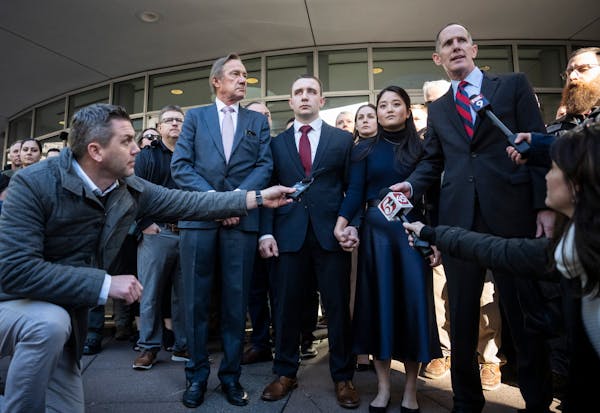When ash trees started to be removed in St. Paul, Mary Heskel began to wonder.
The Macalester College biology professor knew, of course, that the trees — one of the most widely planted in the city — had been infected with emerald ash borer. What she didn't know was what the impact of their loss would be.
"Beyond just a tree not being present, what else is affected?" she wondered. "Does it affect the temperature? Does it affect shade? Does it affect other things for people?"
To try to answer those questions, Heskel decided to conduct a field study with four students this summer.
"Having trees in cities can really buffer heat just by directly blocking the sun," she said. "Trees also do this special thing where they pull water out of the ground, [the water] moves up the tree and then comes out of its leaves. It's called transpiration. So, it cools the air around it by adding moisture."
From June to July, Heskel and her students investigated five St. Paul neighborhoods: Mac-Groveland, Battle Creek, Summit-University, West 7th and Frogtown. They collected data on the diameter of the ash trees, width and height of the tree canopy, status of infestation, land surface temperature, and amount of incoming light around the trees. They examined streets with no ashes, streets where ash trees had been removed, and streets where some new trees had been planted after the ashes had been removed.
Heskel and her students are now analyzing the data.
Romeo Gomes is trying to determine how ash tree removal has impacted street temperature and which neighborhoods are being most impacted. Connery Ritter is studying how newly planted trees are faring. Lukas Lock-Scamp hopes to quantify the loss of trees and shade in St. Paul. And recent graduate Chloe Andree is looking for links between shade and wealth and whether tree removal hit hardest in lower-income blocks.
For her part, Heskel hopes the research results provide insights into how tree removal impacts people's energy use needs and how to mitigate those additional costs for residents. For the ongoing project, she plans to recruit students to explore more neighborhoods next summer and eventually collect data for all of St. Paul.
Taking action
From their fieldwork, Heskel and the students have seen how much people care about the trees on their street.
"Almost everyone [we talked to] had a pretty authentic and earnest connection with the trees on their street, especially if they've lived there for a really long time and they've watched [the trees] mature," she said.
She understands that losing trees can entirely change a yard: Grass can get fried by hot, dry weather; small animals can lose their shelter; and it can be difficult for flowers and vegetables to thrive. It also takes years for a newly planted tree to grow and provide shade.
Still, she advocates removing a dead one from your yard, if possible.
Heskel also recommends St. Paulites track the removal and replanting of ash trees in boulevards and public spaces and see if there are programs that can cut the cost of removal and planting on private property.
She also suggests looking into landscaping that requires less watering and shade. She suggests the University of Minnesota Extension website if you're trying to find new shrubs and trees to plant. And there are even creative ways to beautify the stumps left a tree has been cut down.
In addition to Macalester, the University of Minnesota, the Metropolitan Council, Tree Trust, and the Nature Conservancy are working to help people understand the importance of trees, how a mature tree canopy can help a city and what to do to protect urban greenscape.
"Once we get enough data on St. Paul, it would be interesting also to measure Minneapolis and see if they're comparable and expand the data collection," she said.
